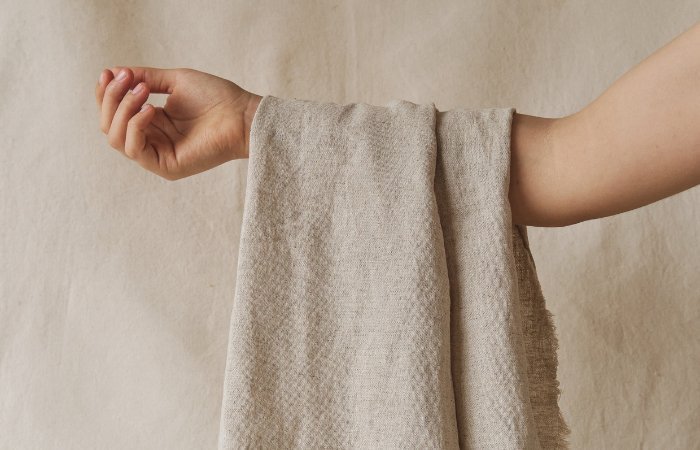Eco-friendly household linens are created from materials that are typically simple to recycle and have advantages like moisture- absorbing and antibacterial characteristics. They are created using techniques that use less water than conventional methods.
They also do not add harmful additions like microplastics or harsh chemicals like bleach or insecticides. These contaminants are harmful and could find their way into our soil and drinking water and eventually enter our bodies.
Some of the materials used for sustainable home linens are:
-
Organic Cotton
Organic Cotton is ethically obtained, cleaned, dyed and cultivated without the use of pesticides, chemical fertilisers, or herbicides. It is incorporated to make comforters, sheets, and other bedding options. Warm flannel, cool percale, crisp, and silky sateen are all made from breathable, soft, and long-lasting organic cotton. It can be used to make organic cotton kitchen towels.
-
Linen
It is a plant-based fibre made from flax plant. The plant does not require additional pesticides and fertilisers, uses minimal water during cultivation and processing, and is manufactured from all plant components. Strong but biodegradable linen that is breathable and able to absorb moisture softens with each wash.
-
Rayon from bamboo
These goods aren't necessarily environmentally friendly, but they may be if they weren't created with harmful ingredients. In order to make a strong, butter-soft fabric, rayon is frequently constructed with regenerative bamboo and cotton.
-
Wool
Wool is exceptionally warm, perfectly breathable, and moisture-absorbing, making it ideal for staying warm in chilly weather. Wool is a renewable fibre source since sheep generate fresh fleece every year. When it is produced without toxic dyes it is biodegradable in nature.
-
Eucalyptus
Eucalyptus trees that are cultivated organically have an even less environmental effect than cotton that is grown organically. Because eucalyptus is cut rather than uprooted, it grows in the next season without needing to be replanted. Eucalyptus crops use ten times less water to grow than cotton crops do.
All eucalyptus bedding is technically Tencel because of the way it is made, but not all Tencel is made of eucalyptus. Only Eucalyptus goods are often labelled as such, however, Tencel may be produced with a variety of fibres.
-
Organic Hemp & Organic Linen
The two traditional bedding materials are hemp and linen. Both are more durable than cotton. Hemp has up to eight times greater strength than cotton. Both textiles are created entirely of natural fibres and are produced in settings free of hazardous chemicals when they are both certified organic. Hemp sheets are available in a variety of colours, however, dazzling white hemp sheets need the use of strong chemicals, which has a negative environmental impact.



Share:
Benefits of Organic Food: Top 5 Reasons to Cook Healthier Meals
7 Must-Have Sustainable Accessories to Pair with Women's Ethnic Wear for Diwali